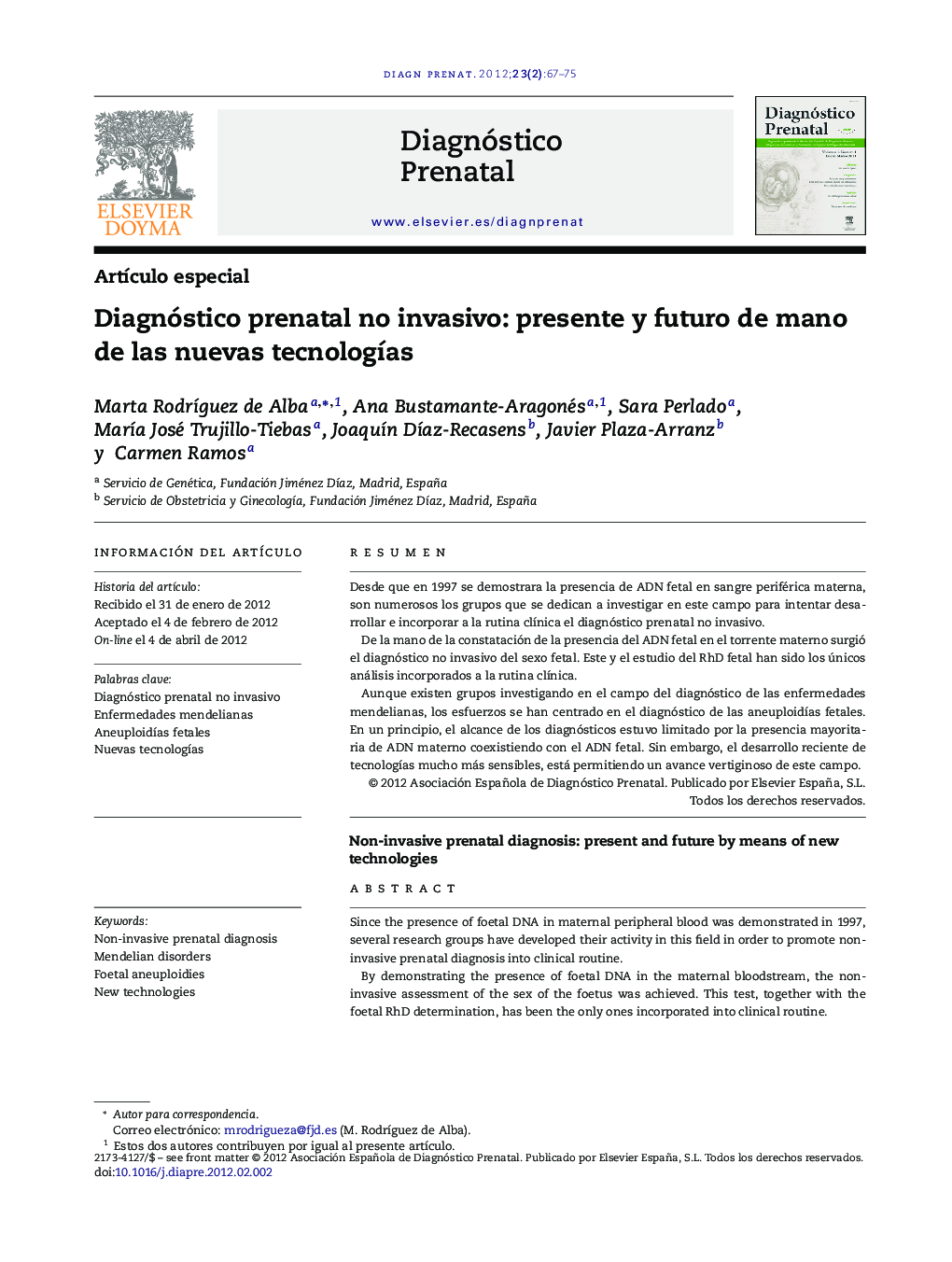| Article ID | Journal | Published Year | Pages | File Type |
|---|---|---|---|---|
| 2813431 | Diagnóstico Prenatal | 2012 | 9 Pages |
ResumenDesde que en 1997 se demostrara la presencia de ADN fetal en sangre periférica materna, son numerosos los grupos que se dedican a investigar en este campo para intentar desarrollar e incorporar a la rutina clínica el diagnóstico prenatal no invasivo.De la mano de la constatación de la presencia del ADN fetal en el torrente materno surgió el diagnóstico no invasivo del sexo fetal. Este y el estudio del RhD fetal han sido los únicos análisis incorporados a la rutina clínica.Aunque existen grupos investigando en el campo del diagnóstico de las enfermedades mendelianas, los esfuerzos se han centrado en el diagnóstico de las aneuploidías fetales. En un principio, el alcance de los diagnósticos estuvo limitado por la presencia mayoritaria de ADN materno coexistiendo con el ADN fetal. Sin embargo, el desarrollo reciente de tecnologías mucho más sensibles, está permitiendo un avance vertiginoso de este campo.
Since the presence of foetal DNA in maternal peripheral blood was demonstrated in 1997, several research groups have developed their activity in this field in order to promote non-invasive prenatal diagnosis into clinical routine.By demonstrating the presence of foetal DNA in the maternal bloodstream, the non-invasive assessment of the sex of the foetus was achieved. This test, together with the foetal RhD determination, has been the only ones incorporated into clinical routine.Although there are research groups working on the diagnosis of Mendelian diseases, efforts have focused on the diagnosis of foetal aneuploidies. At first, the diagnostic scope was limited by the higher presence of maternal DNA co-existing with the foetal DNA. However, recent advances in more sensitive technologies is enabling dramatic progress to be made in this field.
